How Eyewitness Misidentification Contributes To Wrongful Conviction
There are several factors that help make eyewitness misidentification one of the most common contributors to wrongful conviction.
Judges and juries in Minnesota take eyewitness identifications and testimony very seriously in court cases. However, studies show that eyewitness misidentification can lead to wrongful convictions of innocent people. Since 1989, 330 people have been found innocent and exonerated from their prison sentences, according to the Innocence Project. Why does eyewitness identification lead to erroneous convictions? What steps should the judicial system take to limit the number of innocent people who are sent to prison?
When witnesses choose the wrong suspect
There are many environmental, procedural and psychological factors that come into play when witnesses choose a person from a physical or photo lineup. According to the American Bar Association, common factors that can influence a witness’s ability to select a suspect include:
• The amount of light that was present during the incident, as well as where the witness was standing in relation to the crime.
• Whether the perpetrator was wearing a mask or disguise.
• The amount of time from when the incident occurred until the witness was asked to make an identification, as well as whether the witness was exposed to any suggestive information about the crime during that time.
• The procedure and techniques that were used during the lineup process.
• Whether a deadly weapon was used during the incident.
• Whether the perpetrator is a different race than the witness.
All of these details contribute to eyewitness misidentification, which is one of the leading causes of wrongful convictions in the country.
Improving the eyewitness identification process
While people cannot change the way the human mind stores, perceives and retrieves information about a crime, there are ways that officials can standardize eyewitness identification procedures. Having regulations in place can help to minimize the risk of wrongful conviction. Some states conduct double-blind lineups, which means that the lineup administrator does not have any background information regarding the case. This helps to prevent unintentional comments or gestures that may otherwise lead the witness to choose a certain person out of the lineup.
It is important to make sure that the lineup is properly organized as well. Ideally, there should be more than one person in the lineup that has the same physical characteristics as the suspect. For instance, if the perpetrator had a tattoo and a beard, there should be more than one person in the lineup with a tattoo and a beard.
Getting help through the legal process
Not everyone facing criminal charges is guilty of committing a crime. If you have been charged with a crime, you may feel overwhelmed at the potential consequences. You may want to speak to a criminal attorney in Minnesota about the details of your case, as well as your legal rights and options.


